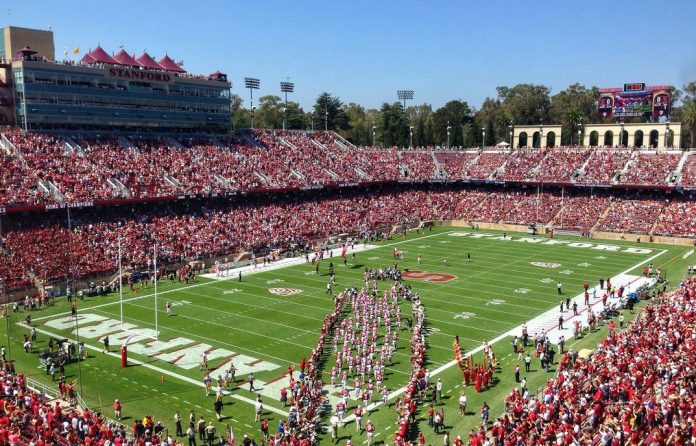
By: Jim Williams
The Capital Sports Network
As the ACC risks losing as many six of its football powerhouses, a new vision is emerging—one that prioritizes academic excellence, research funding, and institutional prestige over pure athletic dominance.
Potential ACC 2.0 Members
- Current Core Likley to be left after 2030: Pitt, Virginia, Duke, Stanford, Cal, Boston College, Syracuse, Wake Forest, Georgia Tech, NC State, SMU
- New Additions: Tulane, South Florida (USF), UConn, Navy (football-only), Army (football-only). There are others to consider like Memphis, Oregon State, Washington State, UTSA, Rice and even San Diego State.
MUST READS
Why This Group Stands Out
Academic Excellence
- Many are AAU members, a gold standard for top-tier research universities.
- Schools like Stanford, Duke, Cal, Georgia Tech, and Virginia rank among the world’s best for innovation and scholarship.
- The ACC and Big Ten are the most research-heavy conferences, with many schools generating $500M–$1.5B+ annually in research funding.
- These schools often prioritize academic prestige and federal grants over athletic dominance. In contrast, the SEC and Big 12 are more sports-centric, with football and basketball driving revenue.
The SEC has several schools with large research budgets, with Texas, Texas A&M, Florida, and Vanderbilt each over or around $1 billion. In contrast, the Big 12 is led by Kansas with a research budget of $400 million and Iowa State at $300 million.
This comparison is not meant to be disrespectful to the schools in either conference. All of these institutions are excellent, with impressive alumni and many reasons for their graduates to take pride in their alma maters. It simply reflects different mindsets and focuses of these institutions, which is not inherently good or bad.
Massive Research Funding
- These ACC institutions attract billions in federal and private grants, often exceeding their athletic budgets.
- Example: Stanford and Duke each bring in well over $1 billion annually in research funding.
Global Prestige
- Renowned medical schools, engineering programs, and international reputations make these schools magnets for tech firms, government agencies, and think tanks.
Why Add USF, Tulane, and Navy?
| School | Strategic Value |
|---|---|
| USF | Top 25 public university, $758M in research, AAU member and Tampa media market |
| Tulane | Elite private school, strong academics, New Orleans market |
| Navy | Historic football brand, federal academy prestige, East Coast anchor. National following plus Washington, Baltimore media market. |
These additions would bring:
- Academic credibility
- Expanded geographic reach
- Media market leverage
- Olympic and football depth
UConn vs. Memphis: Who Fits Best or Take Them Both?
If ACC 2.0 wants to blend sports with academic prestige and digital-first media, UConn is the better fit. But Memphis has had a very strong and impressive fan and corporate support.
- UConn: Multiple national titles, strong media reach in New York City, top-tier academics
- Memphis: Football momentum but lacks Olympic depth and academic prestige. But still could make a good addition with the right mix.
Why Washington State, Oregon State, and San Diego State Deserve ACC Consideration
Geographic Expansion & Time Zone Coverage
- These schools offer West Coast presence, helping the ACC span all four U.S. time zones.
- This enables late-night TV slots, which are valuable for streaming platforms like Amazon and Apple TV.
- With Stanford and Cal already in the ACC, adding WSU, OSU, and SDSU would solidify the Pacific footprint.
Academic & Research Value
- Oregon State and Washington State are Carnegie R1 research universities, indicating very high research activity.
- San Diego State is also an R1 institution and has rapidly grown its academic and athletic reputation.
- These schools align with the ACC’s emerging identity as a prestige-first conference.
Media Market Leverage
| School | Market Area | U.S. Rank |
|---|---|---|
| Washington State | Spokane/Pacific Northwest | ~#70 |
| Oregon State | Portland, OR | #22 |
| San Diego State | San Diego, CA | #27 |
- San Diego State adds a top-30 media market with strong sports viewership.
- Portland and Spokane offer regional depth and recruiting access.
Football & Basketball Competitiveness
- San Diego State has been a consistent winner in football and a powerhouse in men’s basketball.
- Oregon State and Washington State have fielded competitive football teams and bring passionate fan bases.
Strategic Fit for ACC 2.0
- These schools could help the ACC build a coast-to-coast academic-athletic alliance, rivaling the Big Ten in reach.
- They offer Olympic sports depth, strong institutional values, and potential for media innovation.
Notre Dame’s Role in ACC 2.0
Notre Dame is expected to remain in the ACC for all sports except football, valuing its independence while maintaining strategic ties. A proposed scheduling model would allow Notre Dame to pick five ACC football games annually, likely in a 3-home, 2-away format plus a full share of the ACC conference media rights.
Sample Post-2036 Notre Dame Football Schedule
| Opponent | Type |
|---|---|
| USC | Historic Rivalry (94 games) |
| Navy | Annual Tradition (96 games) |
| Stanford | Academic Rivalry |
| Clemson | New 10-year contract |
| Georgia Tech | Longtime Foe (38 games) |
| Boston College | “Holy War” (27 games) |
| Tulane | Major draw in New Orleans |
| South Florida | Scheduled for 2029 & 2031 |
| Michigan | National Power |
| Purdue | Regional Rivalry |
| Texas | High-Profile Game |
| Pitt | Historic Rivalry (73 games) |
Media Strategy for ACC 2.0
A streaming-first approach could redefine ACC media rights post-2036:
| Platform | Role |
|---|---|
| Amazon | Friday Night Football |
| Apple TV | ACC Network rights |
| TNT, TBS, truTV | Saturday games in two windows. |
| CW | Primetime packages – “ACC After Dark.” |
Project 2036: ACC Media Value Scenarios
| Scenario | Estimated Annual Value |
|---|---|
| Traditional ACC (FSU, Clemson) | $400M–$600M |
| Academic ACC 2.0 | $150M–$250M |
| Streaming-Exclusive Model | $100M–$200M |
Bottom Line
In this new vision, sports remain important—but they’re not the primary reason students choose these schools. At the new ACC 2.0 institutions, fewer than 25% of students cite athletics as a key enrollment factor. Instead, they’re drawn to world-class education, research opportunities, and global prestige.
If the ACC embraces this transformation, it could become the Ivy League of the Power 4—a conference where brains and ballgames coexist, and where the future of college sports meets the future of higher education.






